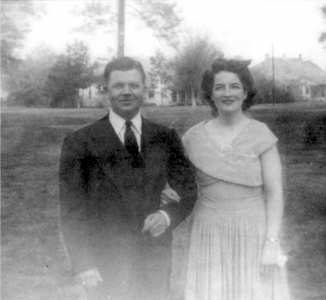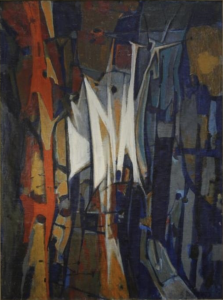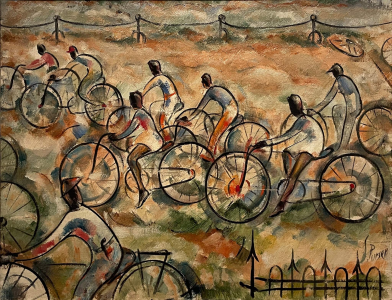

Biography
Stuart Purser was born in Stamps, Arkansas. His father worked in a mine in Tennessee until a mine explosion convinced him to find safer work, after which he worked in a series of sawmills. Purser grew up hunting in the forests around Good Pine, Louisiana, though in later life he became an ardent animal rights advocate. Ignoring his father's wishes that he should pursue a more genteel occupation, Purser asserted his independence and went to Chicago in 1929 with scarcely any money. He enrolled at the Art Institute, supporting himself as a janitor at the Art Institute and other odd jobs.At the Art Institute, Purser met and married a scholarship student from Chicago, Mary May. Mary and her twin sister effectively shared the scholarship that Mary had won. Purser and his young bride decamped for Washington State when he was offered a half-time job teaching art in Pullman. Within a year the couple was hired at Louisiana College in Pineville. Purser's art rapidly gained recognition. He received commissions for four Post Office murals, the first awarded simultaneously with one for Mary. Purser was the first-prize winner in the Art Association Exhibition in New Orleans in the years 1942-1944. His 1944 submission was a satirical work, showing a carousel with Huey Long, Long's mistress, and his sycophants. The local politicians were so frightened by Purser's painting that his award was presented by a five year old girl rather than a city official. Purser volunteered for the Marines, but Louisiana was unable to round up a quorum of other candidates, and Purser ended up aging out of the draft without being called to service.
Having left Louisiana College with a big farewell party for his presumed military induction, Purser navigated the awkwardness of his subsequent return by quickly accepting a new position to found an art department at the University of Chatanooga. Again both Pursers taught at the University, and Stuart continued his successful painting career. Five years later, he had another opportunity to set up an art department, this time at the University of Mississippi. He was there for only a half dozen years when he left to head the Department of Art in the School of Architecture and Allied Arts at the University of Florida in Gainesville. He resigned from that position in 1957, but continued to teach, and took up writing. His text, "The Drawing Handbook," was used at a number of universities. Another book, "Applehead," revealed the racial tensions in the community where he had grown up.


Critical Analysis
Purser's Depression Era murals emphasized activities on the local scene, such as farming, shipping and manufacturing. They were expansive in scope and bright with color. His mural in Gretna, Louisiana is a Precisionist masterpiece, depicting the harbor in this town across the river from New Orleans. In later work, he moved to a darker palette and a more abstract style. Black people were frequently subjects of his work. While Black people were of course omnipresent throughout the South, this fact seemed to have been missed by some more genteel Southern painters. Purser not only recognized Black people as the subjects of his paintings: he discovered and actively encouraged the careers of several Black artists, notably M.B. Mayfield in Mississippi and Jesse Allen in Florida.Murals
- Carrollton, Alabama - Post Office: Farm Scene with Senator Bankhead
- Ferriday, Louisiana - Delta Music Museum: Southern Pattern
- Gretna, Louisiana - Finance Station Post Office: Steamboats on the Mississippi
- Leland, Mississippi - Post Office: Ginnin' Cotton
References
- Irving Ward Steinman, 'Applehead' - Story of Love and Hate, The Town Talk (Alexandria, LA) May 12 (1974).
- Bicycles (Harn Museum of Art).
- Biography (Purser Studio).
- Stuart R. Purser, The Drawing Handbook. Sterling Publishing Company , New York, NY (1977).
- David Magee, The Education of Mr. Mayfield: An Unusual Story of Social Change at Ole Miss. John F. Blair, Publisher , Durham, North Carolina (2009).
- History of the Department of Art & Art History (Art & Art History, The University of Mississippi).
- Interview with Mary Purser (Digital Collections, University of Florida). Interview by Emily Ring, February 11, 1982
- Murals (Purser Studio).
- David D. Magee, Pine Knots and Prejudice, Medium June 4 (2020).
- Stuart Purser, Noted Artist, Speaks at Meeting of Leflore County Art Association, The Greenwood Commonwealth January 21 (1950).
- Stuart R. Purser (Smithsonian American Art Museum).
- Stuart R. Purser, The Town Talk (Alexandria, LA) March 4 (1986).
- Stuart R. Purser (askART).